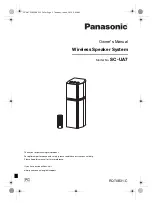
Small balls of molten metal which come out of the arc. A little quantity
is unavoidable, but it should be kept down to a minimum by selecting
correct settings.
· Narrow heap welding
Can be caused by moving the torch too fast.
· Very thick or wide welding
Can be caused by moving the torch too slowly.
· Wire burns back
It can be caused by wire feed slipping, loose or damaged welding tip,
poor wire, nozzle held too close to work or voltage too high.
· Little penetration
It can be caused by moving torch too fast, too low voltage setting or
incorrect feed setting, reversed polarity, insufficient blunting and
distance between strips. Take care of operational parameters
adjustment and improve the preparation of the workpieces.
· Workpiece’s piercing
It may be caused by moving the welding torch too slow, too high
welding power or by an invalid wire feeding.
· Heavy spatter and porosity
It can be caused by nozzle too far from work, dirt on work. Remeber
that the current of welding is appropriated to the wire you are using.
· Welding arc instability
It may be caused by an insufficient welding voltage, irregular wire
feed.
DESCRIPTION OF SIGNS AND SYMBOLS
1 ~
Single phase alternating voltage
U
0
… (V)
Nominal open circuit voltage
Transformer
EN 60974-1
Norm of reference
Flat characteristic
MIG-MAG wire feed welding
U
1
… (V/Hz)
Nominal values of mains voltage and frequency
I
2
… (A)
Welding current
I
1 max
… (A)
The welding unit's maximum absorbed current
I
1 eff
… (A)
Effective current supplied
X
Duty cycle
IP21
6
The welding unit's protection class
H
The transformer's insulation class.
Welding machine suitable for use in environments with heightened risk of
electric shock.
Symbols referring to safety regulations
FAULT FINDING
FAULT
REASON
REMEDY
Wire isn’t conveyed when Feed
roll is turning
1)Dirt in liner and/or contact tip
2)The frition brake in the hub is too tightened
3)Faulty welding torch
1) Blow with compressed air, replace contact tip
2) Loosen
3) Check sheating of torches wire guide
Wire feeding in jerk or erratic
way
1)Contact tip defect
2)Burns in contact tip
3)Dirt in feed roll groove
4)Feed roll’s groove worn
1) Replace
2) Replace
3) Clean
4) Replace
No arc
1)Bad concat between earth clamp and
workpiece
2)Short-circuit between contact tip & gas shroud
1) Tighten earth clamp and check connections
2) Clean, replace tip and/or shroud as necessary
The machine suddenly stops
welding operations after an
extended and heavy duty use
Welding machine overheated due to an
excessive use in stated duty cycle
Don’t switch off the machine, let it cool down for
about 20/30 minutes
This welding machine is for professional use only and is reserved for the industry.







































